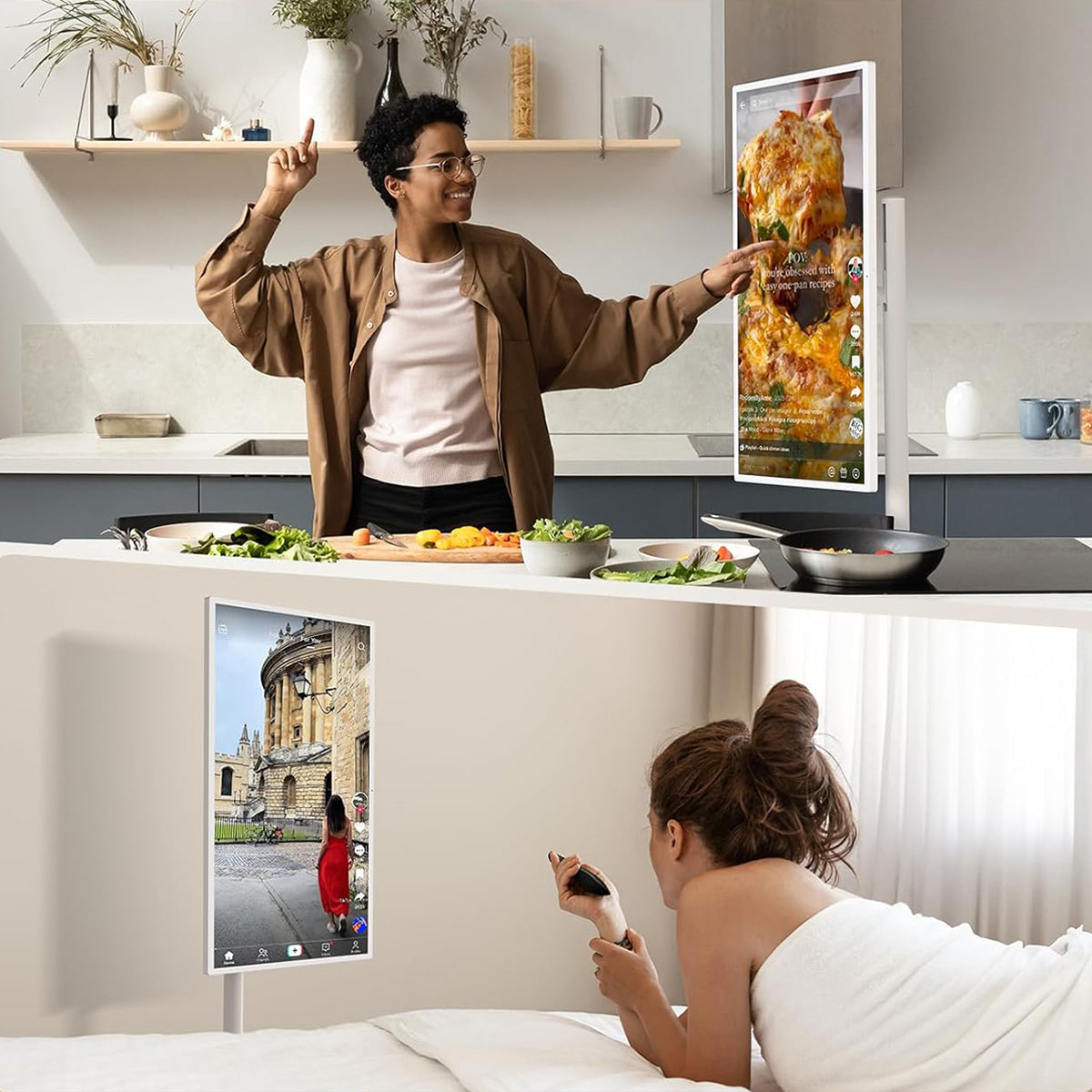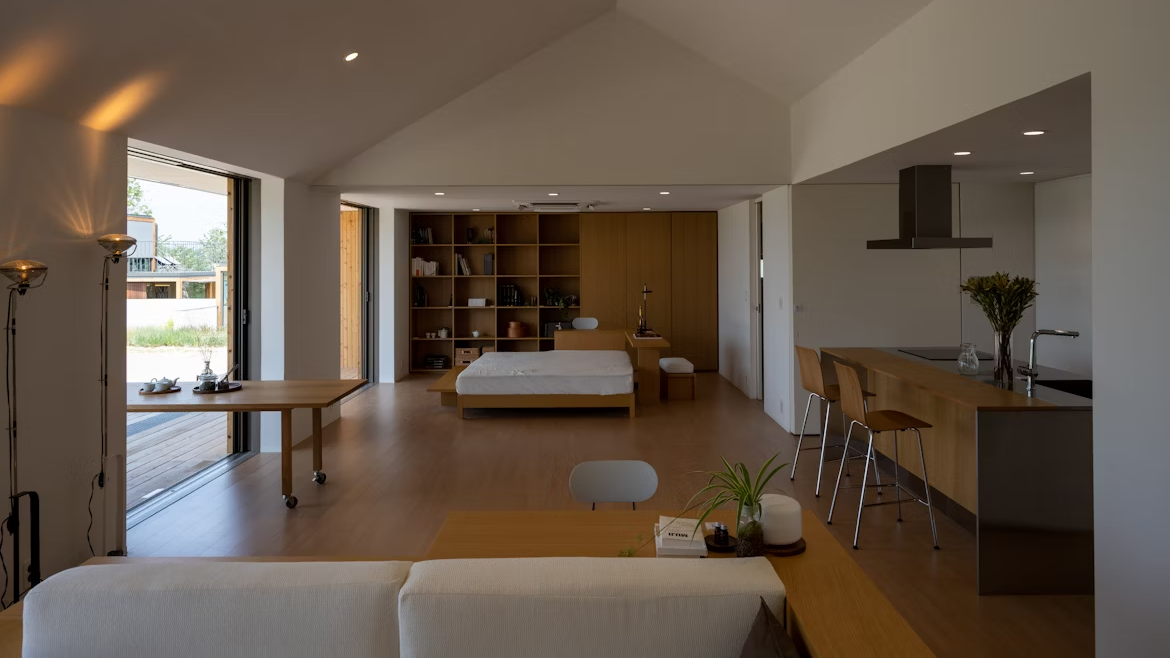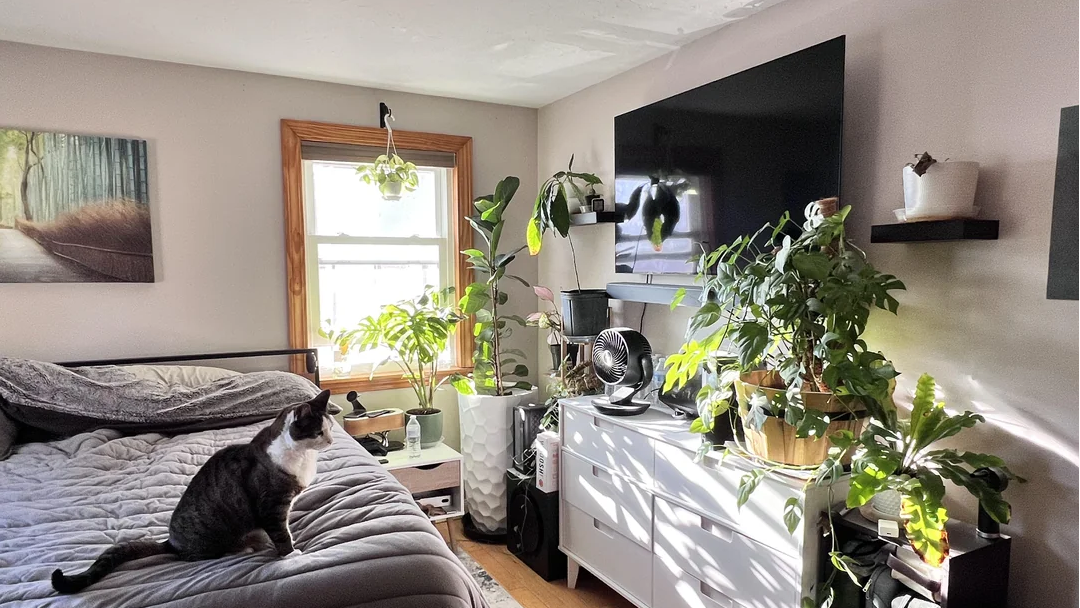Table of Contents
Gone are the days when you found yourself fumbling with multiple applications or shouting commands at the top of your lungs, only for them to be ignored.
In 2025, homes are smarter than ever. With smooth integration, predictive AI, and a focus on launching efficient technology for your convenience, smart home devices are revamping daily life, making your comfort zone more secure, intuitive, and personalized.
According to Horowitz Research, 48% of American homes have at least one smart home device.
Curious to know what those top ten smart home devices are? Then this blog is here to cover the details and who to approach to buy one.
What Is A Smart Home?
A smart home is a dwelling equipped with a variety of devices and systems that can communicate with each other and allow you to control them remotely or automatically:
Interconnected Devices
A smart home primarily depends on a network of interconnected devices. These can consist of smart speakers, thermostats, lighting, security cameras, and electronic appliances, typically connected via Wi-Fi, Zigbee, Bluetooth, or the increasingly popular Matter standard, letting them communicate and share data.
Centralized Control
One of the major benefits of a smart home is that you get to enjoy centralized control. You can manage all their connected devices from a single interface, usually a smartphone, a voice assistant, or a smart display, ending the hassle of controlling each device individually.
Automation and Routines
Such homes are at the top of the game when it comes to automation. You can set schedules or routines for devices to function without your physical efforts. For example, lights can switch on at sunset, the coffee maker can start preparing at a specific time, or the thermostat can adjust before you step inside your home. They are designed with advanced systems that use sensors and AI to learn habits and adapt to the environment accordingly.

Improved Security
For smart homes, security stands paramount. Therefore, devices such as smart locks offer keyless entry and access via remote control, security cameras provide live feeds and motion notifications, and video doorbells let you see and talk to visitors without opening the gate. Integration with alarm systems tends to create a detailed security solution.
Energy Efficiency
Smart home devices can result in significant energy savings. Smart thermostats learn your preferences and optimize cooling and heating. You can program smart lighting to turn off when rooms are not in use or adjust brightness based on natural light, whereas smart plugs can easily monitor energy usage and cut power if they sense idle devices.
Top 10 Smart Home Devices in 2025
Govee Smart LED Lights
Govee takes the lead in pushing the limits of providing ambient lighting. According to a recent study, a large number of Americans are using lighting to improve their mood, and Govee is actively promoting its products in this space. In 2025, their smart LED lights are not confined to strips that just change their colors, but offer advanced AI Lighting bot technology, letting you enjoy immersive experiences.
Furthermore, they are introducing “Gaming Pixel Lights” to create dynamic visuals that will be synced with gameplay, and “Table Lamp 2 Pro x Sound by JBL,” merging premium-quality audio with real-time light syncing capability. Their “Mini Panel Lights” provide you with rich vibrancy with RGBIC color and an intuitive application that recognizes panel structures for seamless arrangement.

Ring Home Security Systems
When it comes to home security, Ring secures the first rank. Their alarm systems offer strong and DIY-friendly solutions. The 2025 iterations of Ring Alarm systems are famous for flawless integration with their wide range of security cameras and video doorbells.
Apart from these, prominent features include reasonable professional monitoring options, sufficient cellular and battery backup for non-stop operation. And redesigned, smaller sensors that can be installed easily. The pro version is built with an eero Wi-Fi 6 router, further boosting network security and becoming a reliable option for you. Its AI-powered motion detection assists in decreasing false alarms by differentiating between actual humans and pets, providing you with mental relaxation.
Smart Robot Vacuum
Robot vacuums like the Roborock Saros Z70 are replacing basic cleaning. This has “OmniGrip” arms capable of picking up small objects and premium precision sensors to identify and avoid hundreds of different things. On top of that, the Dreame X50 Ultra boasts a “ProLeap System” consisting of tiny wheeled legs, for it to climb shallow stairs, and lastly, Eufy's 3-in-1 E20. This vacuum can be detached for handheld cleaning, providing improved navigation, automatic emptying, and integration with smart home ecosystems, asking you to sit back and relax while it cleans the floor on its own.
GFF Portable TV on Wheels
The GFF Portable TV on wheels is changing the entertainment game. In 2025, these smart screens will consist of touch displays, Android operating systems, and high-resolution screens. There is more to the list as the wireless TV on wheels comes with robust batteries, allowing you to use them both indoors and outdoors, making them the best substitute for moving between rooms, camping trips, or even backyard gatherings. The latest TV on wheels models have built-in features such as 360-degree screen rotation, with HDMI and USB inputs, to blend in with various streaming devices, while the portable smart TV with Wi-Fi entertains you no matter your location.

Smart Bed
Sleeping beds like the Saatva Solaire and Sleep Number i8 offer tailored comfort, designed with adjustable air chambers and firmness levels, offering up to 50 precise settings on each side, to cater to separate preferences and sleep positions. The charm of these smart beds lies in their sensors to track your sleep, monitor heart rate, breathing rate, and movement. Some models of smart beds include features such as “BryteWaves” for gentle motion to support sleep, warming functions for cold feet, and built-in under-bed lights that switch on when you get up. With smart beds, you can view detailed sleep reports, and the technology adjusts in response to snoring.
Smart Air Purifier
These devices connect to your Wi-Fi, allowing you to control them through mobile applications and voice assistants. Moreover, they continuously track air quality parameters like particulate matter and VOC levels in real-time. The air purifier’s features include multi-stage filtration, an automatically adjusting fan speed based on identified pollutants, smart scheduling, and alerts about replacing the filter on time. Coway Airmega 400S and Levoit Core 600S cater to various sizes of your room, and prioritize energy efficiency.
Smart Curtains
Smart curtains are about elevating energy efficiency and creating a tailored ambiance. In 2025, you will be able to control them through smartphone apps, voice commands, or program them to open and close based on specific times. Many are designed with light and temperature sensors, adjusting without physical efforts to optimize natural light and maintain indoor climate. Trends involve sustainable materials, layered formation for better information, and light control, merging smoothly with modern interior design.
Smart Scent Air Machine
With smart scent air machines, you are allowed to set schedules, adjust the intensity, and even mix different scents. The device in 2025 can cover large areas, releasing specific aromas based on your set time of day, activity, or even motion detection. Many models offer waterless diffusion for cleaner delivery of scent and are designed for both solo and combined use with HVAC systems, too.
Smart Lightbulbs
Smart lightbulbs now provide tunable white light and millions of RGB colors, permitting you to create any kind of mood or scene. In this case, you will come across Matter-enabled compatibility for flawless cross-brand integration, premium energy monitoring capabilities, and advanced AI integration that learns user habits to automatically adjust lighting. Brands such as Hue, Govee, Audit, and many others are offering smart lightbulbs.

Smart Kitchen
It features AI-powered appliances that learn your cooking preferences and offer suggestions, has voice-controlled systems for hands-free operation, and touchless faucets for improved hygiene. Then, you get smart refrigerators that can track food supplies, monitor when your groceries are on the verge of expiry, and also suggest recipes, plus you can expect built-in composting systems, water-saving faucets, and appliances created for health-conscious cooking.
Future Trends of Smart Home and Devices
AI-Powered Personalization
Devices are now AI-powered and personalized, which can learn from user behavior to predict needs like adjusting lighting, temperature, and music based on your taste. Apart from this, it can also improve security by recognizing faces and detecting unusual activity.
Robots
Home robots are emerging with amazing features. For instance, the new models can clean, monitor pets, help senior citizens, and even interact with family members through voice and facial recognition. Hence, these aren’t restricted to tools, but more like your companions and helpers.
Iot Integration
The Internet of Things is making all home devices work together. In the future, your fridge could alert you when you are running short on groceries, your oven could preheat according to the set schedule, and your smart mirror could show your calendar and weather before you move out.
Conclusion
In 2025, the top 10 smart home devices are capturing consumer attention, and if you plan to buy a portable TV on wheels, you should consider GFF. They have a TV on wheels, which you can carry around your home indoors and outdoors. So get your quote!





